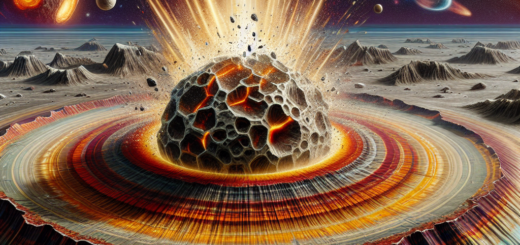Beyond Pluto: Discovering the Hidden World of the Oort Cloud
Beyond the orbit of Pluto lies a vast and mysterious region of our solar system known as the Oort Cloud. This distant realm is home to billions of icy bodies, some of which may hold the key to unlocking the secrets of our cosmic origins.
The Oort Cloud is a spherical shell of comets and other icy bodies that surrounds our solar system at a distance of up to 100,000 astronomical units (AU) from the sun. To put that in perspective, one AU is the average distance from Earth to the sun, which is about 93 million miles. This means that the Oort Cloud is located roughly between 0.8 and 1.6 light years away from the sun.
Despite its immense size, the Oort Cloud is incredibly difficult to study due to its extreme distance from Earth. Most of the objects in the Oort Cloud are too faint and too far away to be observed directly, so scientists rely on indirect methods to study them. One of the most successful techniques is to study comets that originate from the Oort Cloud and venture into the inner solar system.
Comets are icy bodies that orbit the sun in highly elliptical orbits, bringing them close to the sun at their closest approach. As a comet approaches the sun, its icy surface begins to vaporize, creating a glowing coma and a long, bright tail of gas and dust. By studying the composition and trajectory of comets, scientists can learn a great deal about the conditions in the Oort Cloud and the processes that shaped our solar system.
Recent advances in technology have allowed astronomers to detect and study objects in the Oort Cloud more effectively than ever before. The discovery of Sedna, a distant dwarf planet with an extremely elongated orbit, provided strong evidence for the existence of the Oort Cloud and raised new questions about its origins and composition. In addition, the New Horizons spacecraft’s flyby of Pluto in 2015 provided valuable insights into the outer reaches of our solar system and the potential for future exploration.
The Oort Cloud is thought to contain trillions of icy bodies, ranging in size from a few kilometers to hundreds of kilometers across. These objects are believed to be remnants from the early days of the solar system, left over from the formation of the planets billions of years ago. By studying the composition and distribution of objects in the Oort Cloud, scientists hope to learn more about the conditions in the early solar system and the processes that led to the formation of our own planet.
As our understanding of the Oort Cloud continues to grow, so too does our appreciation for the vast and dynamic nature of our solar system. Beyond Pluto lies a hidden world of icy bodies and ancient relics that may hold the key to unlocking the mysteries of our cosmic origins. The Oort Cloud may be difficult to study, but its secrets are waiting to be discovered by those brave enough to venture beyond the edges of our solar system.













